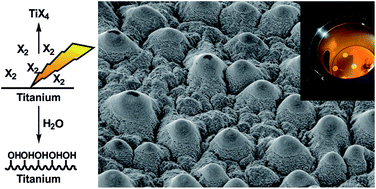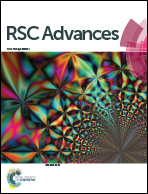Conical microstructuring of titanium by reactive gas assisted laser texturing†
Abstract
Femtosecond laser micromachining is an important and flexible method to generate precisely targeted surfaces on various materials. On titanium, the laser structuring process strongly depends on the laser parameters. For example, an increasement of the pulse length and repetition rate favors melting processes instead of ablation and microstructuring. We report on an investigation of reactive halogens (iodine, bromine, chlorine) and halocarbons as additives to the laser structuring process of pure titanium and the common alloy Ti-6Al-4V with 0.75 ps laser pulses. The choice of the halogen allows control of whether solely the chemical composition or the surface microstructure should be altered. Bromine was found to be an efficient additive to generate homogeneous microstructures based on micropillars at convenient conditions (air, atmospheric pressure). The resulting surfaces have been characterised by scanning electron microscopy, energy dispersive X-ray spectroscopy, thermal emission infrared photography, reflective UV/Vis spectroscopy and contact angle measurements. The bromine/air processed titanium surfaces revealed superhydrophilicity, strongly increased thermal emissivity and a high absorptivity (“black metal”).



 Please wait while we load your content...
Please wait while we load your content...